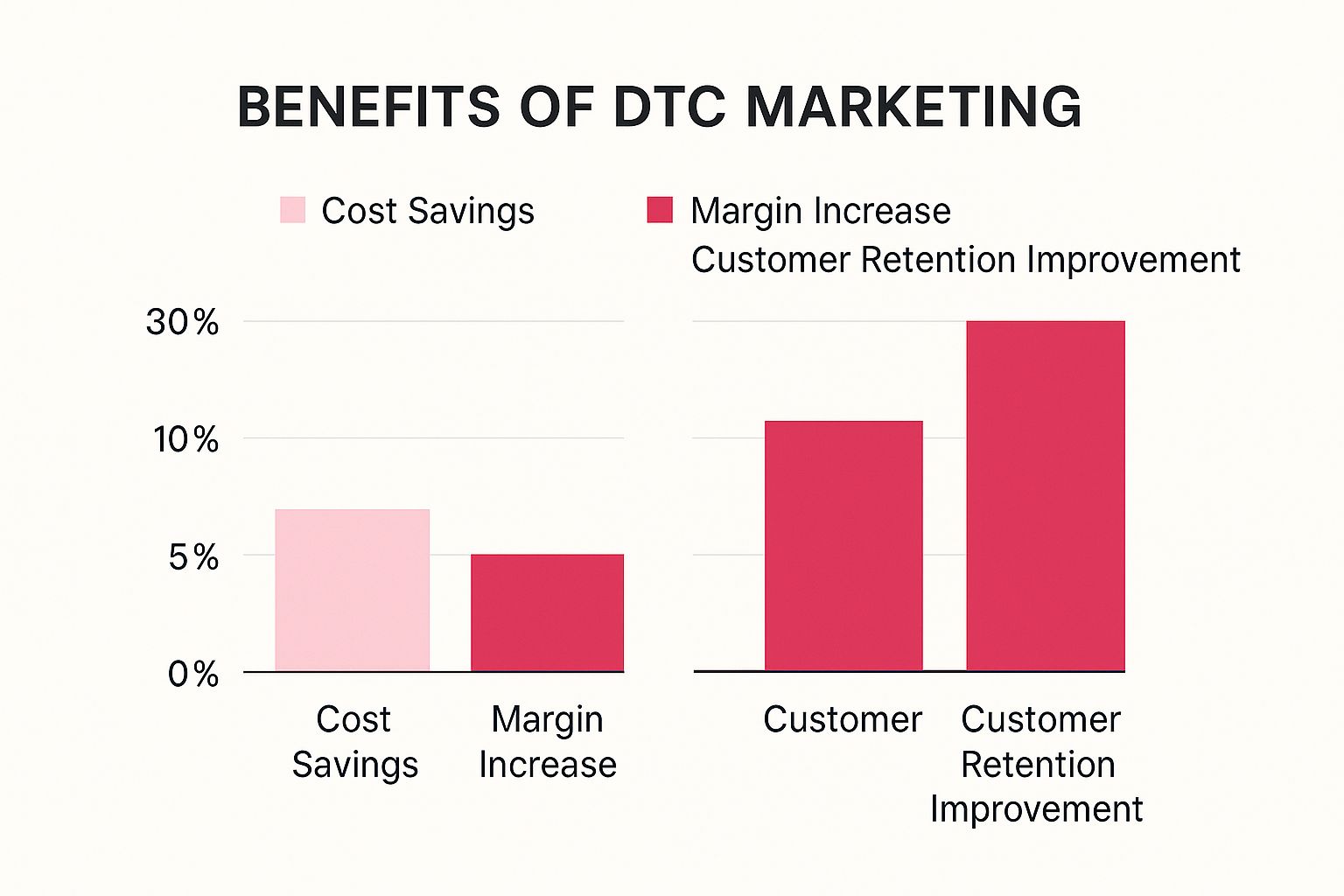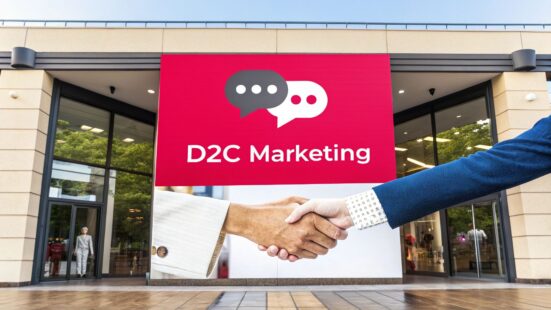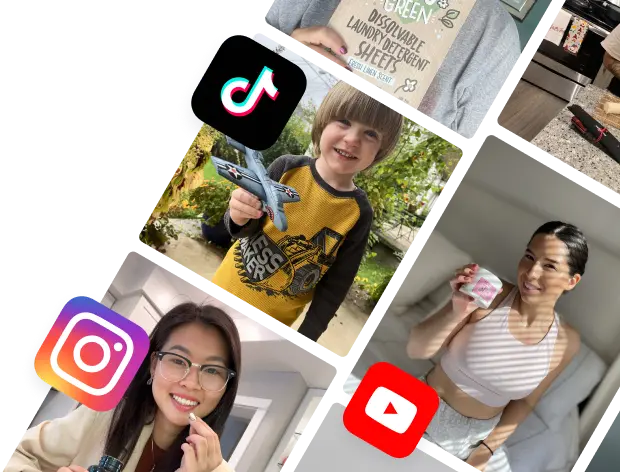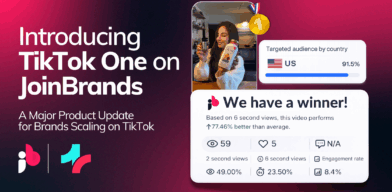 Mastering Ad Creation for Shopify: A Step-by-Step Tutorial
Mastering Ad Creation for Shopify: A Step-by-Step Tutorial
Table of Contents
Understanding Direct to Consumer Marketing in Today’s Landscape
Imagine you’re a talented artisan who makes beautiful, handcrafted furniture. The old way to sell your chairs would be to strike a deal with a big retail store. That store would take a hefty cut, stick your work right next to dozens of competitors, and you’d likely never meet the person who actually buys and loves your creation. Direct to consumer marketing, often shortened to D2C, completely changes this picture.
Instead of going through a retailer, you sell directly to your final customer. It’s like opening the doors of your workshop to everyone. You get to greet them, share the story behind your work, and manage their entire experience from start to finish. This direct connection is where the magic happens.
This approach is more than just cutting out the middleman; it’s a complete shift in how you run a business. When you own the customer relationship, you own the entire conversation. You’re no longer just a manufacturer—you become a brand that people can connect with. Companies like Warby Parker and Glossier became household names by embracing a simple truth: people today want to support brands they feel a genuine connection with.
The D2C Mindset: From Transaction to Relationship
At its heart, successful direct to consumer marketing is about changing your perspective. You stop shouting one message to a crowd and start building individual relationships, even if you have thousands of customers. Every click, comment, and purchase is a chance to learn and make that connection stronger.
- You control the narrative: Your brand’s story, values, and mission are shared directly from you, without a retailer’s spin. This builds authenticity.
- Data becomes your guide: You receive first-hand information about who is buying your products and why. This is invaluable for creating better products and more effective marketing.
- Feedback is immediate: Customer thoughts, good and bad, come straight to you. This creates a powerful cycle for making quick improvements and staying ahead.
D2C is a super-focused version of selling to consumers. Grasping the key differences between B2B and B2C marketing can provide a solid foundation for understanding this evolution.
The Scale of the D2C Opportunity
This isn’t just a small trend; it’s a huge economic shift. The worldwide D2C e-commerce market hit an impressive $162.91 billion in 2024. Projections show it’s set to more than triple, reaching an incredible $595.19 billion by 2033. This massive growth is driven by shoppers who are actively looking for the kind of personal touch that large retail chains often can’t offer.
As you think about your own brand, this market momentum shows the huge potential waiting to be tapped. You can explore these figures and discover more insights about D2C growth on emarsys.com. The data is clear: building a direct-to-consumer brand isn’t just a passion project—it’s a major business opportunity.
Why Smart Brands Are Choosing Direct Relationships Over Retail
The move toward direct-to-consumer marketing is no longer just a strategy for nimble startups. Well-known brands, many with long histories in traditional retail, are now actively building their own direct sales channels. While it might seem odd to bypass a dependable source of revenue like big-box stores, the reasons extend far beyond just earning a higher profit margin (though that’s a nice bonus). The real driver is the ability to gain complete control over the entire customer experience.
Think about a product sold in a major department store. The brand has very little influence on how its items are displayed, what the sales staff say about them, or how the store follows up after a purchase. With a direct model, the brand becomes the designer of every single customer touchpoint. This full ownership of the customer journey is a significant advantage, empowering brands to build a consistent and memorable experience, from the first advertisement someone sees to the unboxing of their second or third purchase.
The Power of Full Ownership
When a brand sells directly to its customers, it takes charge of its own destiny. This goes beyond just controlling branding and messaging; it’s about becoming more agile and making smarter business decisions.
- Financial Control and Reinvestment: By removing the retail middleman, D2C brands often see their profit margins increase by 20% or more. This additional cash isn’t just extra profit; smart companies reinvest it into better customer acquisition, superior product development, and creating outstanding experiences that traditional retailers can’t match.
- Direct Access to Customer Data: In the old retail model, customer data is often a mystery. D2C brands, on the other hand, collect a constant flow of valuable first-party data. They know who is buying their products, where they live, what they browse on the website, and even what they leave in their shopping carts. This information is invaluable for personalization and future product ideas.
- Rapid Testing and Agility: Want to try out a new product, a different price, or a fresh marketing campaign? In the retail world, this could involve months of negotiations and planning. A D2C brand can launch a test on its website in a single afternoon, receive immediate feedback, and adjust its strategy based on real-world customer behavior.
Beyond Margins: Building Community and Loyalty
The most successful brands are built on more than just sales. Having a direct line to customers allows brands to cultivate real communities. They can offer exclusive loyalty programs, host special events, and create online spaces where customers can connect with each other and the brand itself. This feeling of belonging is a strong motivator for repeat business and long-term loyalty.
To better understand the strategic shift, the table below breaks down the key differences between the D2C approach and the traditional retail model.
D2C vs Traditional Retail: Strategic Advantage Breakdown
A comprehensive comparison revealing why direct-to-consumer marketing delivers superior business outcomes compared to traditional retail partnerships
| Business Aspect | D2C Marketing Approach | Traditional Retail Model | Long-term Impact |
|---|---|---|---|
| Customer Relationship | Direct, personal, and ongoing communication. | Indirect relationship, filtered through the retailer. | Builds strong brand loyalty and community. |
| Data Collection | Access to rich first-party data on behavior and preferences. | Limited or no direct access to customer data. | Enables data-driven decisions and deep personalization. |
| Profit Margins | Higher margins by eliminating the retail markup. | Lower margins due to wholesale pricing and fees. | Greater financial control and funds for reinvestment. |
| Brand Control | Full control over messaging, pricing, and customer experience. | Limited control; brand message can be diluted. | Creates a consistent and powerful brand identity. |
| Product Innovation | Ability to quickly test new products and get direct feedback. | Slower, more complex process to launch new items. | Fosters agility and a faster product development cycle. |
As you can see, the D2C model provides a clear path to building a more resilient and customer-focused business by prioritizing direct relationships and data-driven strategy.
The following infographic highlights some of the key improvements D2C brands see when they move away from traditional retail.

The numbers speak for themselves. The benefits are significant across the board, with customer retention often showing the biggest jump—sometimes up to 30%. This direct connection establishes a feedback loop that retail simply can’t offer, paving the way for constant improvement and a stronger, more personal bond with the people who matter most: your customers.
Building Your Foundation: Core Strategies That Actually Work
Success in direct to consumer marketing isn’t just about putting up a website; it requires a completely different mindset. Instead of shouting a message at a huge, faceless crowd, your aim is to start and nurture one-on-one conversations. This initial work is what separates brands with a loyal community from those that disappear after a few months. It all starts with a clear, relatable story that speaks directly to your perfect customer, away from the distractions of a crowded retail shelf.
Crafting a Resonant Brand Story
Your brand story is the very heart of your D2C strategy. It’s more than just a mission statement tucked away on your website; it’s the genuine answer to the customer’s question, “So what? Why should I care?” A strong story looks past product specs and connects with people through shared values and feelings. Think of it as opening the door and inviting a customer into your world.
- Be Authentic and Transparent: D2C buyers value honesty. Share where you came from, the bumps in the road you’ve hit, and the passion that drives your products. This creates a human connection that a retail display simply cannot offer.
- Define Your “Why”: Beyond making money, why does your brand exist? Perhaps you’re solving a frustrating problem you personally dealt with or supporting a cause close to your heart. This purpose will become the foundation for all your marketing.
Developing an Irresistible Value Proposition
With no big-name retailer to vouch for your product, your value proposition has to be sharp and unmistakable. It must give shoppers a compelling reason to choose you over the familiar comfort of a store they already trust. This is your core promise to the customer, and you have to deliver on it every single time.
A great value proposition directly addresses a customer’s biggest hesitation. For instance, a D2C mattress company isn’t just selling mattresses; it’s selling “Your best sleep ever, with a risk-free, 100-night trial.” This tackles the fear of buying a mattress untested and flips it into a major selling point.
The Marketing Funnel as a Helpful Guide
A D2C marketing funnel should never feel like a high-pressure sales tactic. It’s better to think of it as a friendly guide, designed to educate and empower customers as they get to know you.
| Funnel Stage | Customer Question | D2C Strategy Example |
|---|---|---|
| Awareness | “What is this brand?” | Create shareable content (like blog posts or videos) that solves a customer’s problem without a heavy sales pitch. |
| Consideration | “Is this right for me?” | Offer detailed product guides, real customer reviews, and transparent comparisons to build trust. |
| Conversion | “How can I be sure?” | Provide a clear return policy, responsive customer support, and a simple, secure checkout process. |
| Loyalty | “What’s next?” | Keep the relationship going with exclusive content for members, loyalty rewards, and an active online community. |
The rapid growth in this space shows just how important it is to get these strategies right. The direct marketing industry, where direct to consumer marketing is a major player, is growing fast. The market is expected to jump from $191.23 billion in 2024 to $204.84 billion in 2025, marking an impressive annual growth rate of 7.1%. As more brands jump in, having a solid foundation is crucial to standing out. You can read the full research on direct marketing’s growth here.
Ultimately, when you blend a heartfelt story, a clear value promise, and a supportive customer journey, you build a foundation that doesn’t just attract customers—it keeps them. To sharpen your strategy even more, take a look at our guide on using predictive analytics for marketing to better anticipate customer needs.
Mastering Digital Channels Where D2C Brands Thrive

A sharp D2C website, like the ones highlighted on Shopify, serves as a brand’s digital flagship store. Every button, image, and word is carefully placed to create a smooth path from the moment a customer discovers your brand to the final click of the “buy” button.
A solid direct to consumer marketing plan is more than just launching a website. It’s about being smart and meeting customers on the digital channels they already use and love. Unlike brick-and-mortar retail where foot traffic is king, D2C brands succeed by building a thoughtful presence across various online platforms. The aim is to create a connected and helpful experience, not just a series of random ads.
Your Website: The Core of Your D2C Universe
Think of your website as your home base. It’s the one piece of digital real estate where you have complete control. Every other channel you use, whether it’s social media or email, should guide customers back to this central hub. To make it truly effective, you need to go beyond looks and design it to turn visitors into buyers.
- Simplify the Journey: Create a seamless path from your homepage to the checkout. Data shows that 21% of shoppers abandon their carts simply because the process is too long or confusing.
- Show, Don’t Just Tell: Since customers can’t physically touch your products, use high-quality photos, detailed videos, and vivid descriptions to help them imagine the item in their hands.
- Build Trust Instantly: Make sure to feature customer reviews, security badges, and straightforward return policies. These small details provide peace of mind for first-time shoppers.
Essential Channels for D2C Growth
Outside of your website, a handful of channels are crucial for finding new customers and keeping them engaged. Consider these the main roads that direct traffic to your online store.
| Channel | Key Role | Success Strategy |
|---|---|---|
| Email Marketing | Nurturing Relationships | Don’t just send promotions. Use email to share your brand’s story, provide exclusive content, and build a real community. Your goal should be to send emails people actually want to open. |
| Social Media | Building Community & Driving Discovery | Use platforms like Instagram, TikTok, and Facebook to let your brand’s personality shine. Talk directly to your followers and use targeted ads to find new audiences that look like your best customers. |
| Creator Marketing | Establishing Authenticity | Work with creators who are genuine fans of what you sell. An honest recommendation from a trusted voice can do more for your brand than a traditional ad ever could. This includes user-generated content (UGC), which acts as powerful social proof. |
The Power of Authentic Content
One of the best ways to build trust is by showing content from real customers and creators. When potential buyers see people just like them enjoying your product, it confirms their own interest. For brands looking to master this approach, our guide on building a winning user-generated content strategy offers a deeper look. This tactic not only boosts your credibility but also provides a constant supply of marketing material that feels real and relatable. By managing these channels well, you create a strong ecosystem that powers your direct to consumer marketing from first glance to lasting loyalty.
Creating Customer Experiences That Build Lasting Loyalty

In direct to consumer marketing, the moment a customer clicks “buy” isn’t the end of their journey—it’s the beginning of your relationship. Since there’s no physical store, every digital touchpoint, from your website’s layout to your follow-up emails, shapes your brand’s personality. This experience is your secret weapon for turning one-time shoppers into passionate fans who feel a real connection to your business.
Think of yourself as the perfect host at a party. A great host does more than just let people in; they anticipate what their guests need, create a welcoming atmosphere, and make sure everyone has a memorable time. D2C brands must do the same in the digital world, crafting a customer journey that feels personal and supportive at every turn.
Personalization That Genuinely Helps
Meaningful personalization is about much more than just putting a customer’s name in an email subject line. It’s about using data to offer truly helpful suggestions and communications. For example, instead of a generic “we miss you” message, a D2C coffee brand might see a customer buys a specific blend every month and send a friendly reminder right before they’re about to run out. This feels less like an ad and more like a thoughtful tip from a brand that gets their routine. This kind of attention is what fosters genuine loyalty.
Proven Strategies for Customer Retention
Getting a new customer is great, but keeping them is how D2C brands thrive. The objective is to move beyond single sales and build a sustainable cycle of repeat business.
- Loyalty Programs That Offer Real Value: Ditch the confusing point systems. Instead, provide simple, desirable rewards like early access to new products, free shipping, or members-only content. The best programs make customers feel like they’re part of an exclusive club.
- Subscriptions That Solve a Problem: For products people use regularly, subscription models are a game-changer. They offer unbeatable convenience by taking reordering off the customer’s to-do list, which provides them with consistent value and you with predictable revenue.
- Community Building: Launch a dedicated space, like a private Facebook group or a Discord server, where customers can connect with your team and each other. Loyalty deepens when customers form friendships centered around your brand.
The incredible growth in this market shows just how powerful these approaches are. Established D2C brands brought in about $135 billion in e-commerce sales in 2023. That number is expected to climb to $187 billion by 2025, a huge leap powered by brands that master the art of building these lasting customer bonds. You can discover more insights about D2C brand performance.
Ultimately, your success in direct to consumer marketing comes down to your ability to encourage repeat business and focus on increasing customer lifetime value. Every single interaction—from a seamless return process to resolving a complaint with empathy—is an opportunity to reinforce that customer relationship. To understand how partnerships can fuel this loyalty, check out our guide on measuring influencer marketing ROI.
Leveraging Creator Partnerships for Authentic Brand Growth

Trust is the currency of direct-to-consumer marketing, and one of the best ways to earn it is through genuine creator partnerships. This isn’t about a one-off, flashy endorsement. It’s about building real alliances with creators who already speak the language of your target audience. The aim is to find individuals whose values mirror your brand’s, resulting in collaborations that feel honest, not transactional.
A well-executed creator partnership works like a recommendation from a trusted friend. This modern-day word-of-mouth is incredibly effective because creators have spent time building a strong rapport with their followers. A glowing review or a tutorial video from them carries much more credibility than a standard ad. The main hurdle for D2C brands is discovering these ideal creators without endless searching.
Finding Authentic Voices in a Crowded Space
Authenticity is the secret sauce to a successful partnership. Your product should fit naturally into a creator’s content and daily life. Audiences can easily detect a forced collaboration, which can hurt the credibility of both the creator and the brand.
To build these relationships at scale, D2C companies often turn to creator marketing platforms like JoinBrands. These platforms offer tools to filter through thousands of potential partners, pinpointing those whose audience demographics and content style align perfectly with your campaign goals. This shifts the process from a guessing game to a data-backed strategy.

The platform’s interface simplifies the search for specific creator types, like TikTok Shop Affiliates or UGC producers, connecting you with the right talent for the job.
Types of Creator Collaborations That Work
Authentic partnerships come in many forms, each bringing unique advantages to a direct-to-consumer marketing strategy.
- Honest Product Reviews: Raw, real-world feedback from a trusted creator is priceless for building social proof and helping customers make a purchase decision.
- Behind-the-Scenes Content: Inviting a creator to see your production process or product development makes their audience feel like insiders, deepening their bond with your brand.
- Long-Term Ambassadorships: An ongoing partnership with a creator establishes a more believable and lasting endorsement. Your brand becomes a consistent part of their narrative.
- Co-Created Products: The pinnacle of collaboration is developing a product with a creator. This offers their audience an exclusive item they feel a part of, often leading to huge engagement and sales.
Measuring the success of these creative partnerships is key to refining your strategy. The table below outlines the essential metrics D2C brands should track.
| Creator Marketing Success Metrics for D2C Brands |
|---|
| Essential performance indicators and optimization strategies for measuring authentic creator marketing impact in direct-to-consumer campaigns |
| Success Metric | Measurement Approach | Benchmark Range | Improvement Strategy |
|---|---|---|---|
| Engagement Rate | (Likes + Comments + Shares) / Followers | 3%-6% (Good) | Partner with creators whose audience actively interacts with sponsored and non-sponsored posts. Encourage calls-to-action (e.g., “Comment your favorite feature!”). |
| Conversion Rate | (Purchases / Clicks) x 100 via unique links/codes | 1%-3% (Strong) | Provide creators with exclusive, time-sensitive discount codes to create urgency. Ensure the landing page is optimized for a smooth checkout. |
| Return on Ad Spend (ROAS) | (Revenue from Campaign / Cost of Campaign) | 3:1 – 5:1 (Healthy) | Focus on micro- and nano-influencers who often have higher engagement and lower fees, improving overall ROAS. |
| Content Quality & Brand Alignment | Qualitative review of content against brand guidelines | 90%+ Alignment | Create a clear, concise creative brief but allow for creative freedom. Select creators who genuinely love and use your product. |
By tracking these metrics, D2C brands can move beyond simple vanity numbers and understand the true business impact of their creator collaborations. The key is to focus on partners who drive both engagement and meaningful action.
The world of creator collaborations is always changing. For more on how these partnerships are shifting, explore the insights available from Google’s Creator Partnerships Hub. By prioritizing authentic relationships over quick transactions, D2C brands can build enduring customer trust and achieve steady growth.
Your Direct to Consumer Marketing Action Plan
Moving from theory to practice is the most important part of your direct to consumer marketing journey. This isn’t a one-and-done task; it’s about taking smart, organized steps that build on each other. Think of it like putting together furniture—you follow the instructions, building the main frame before you add the smaller, finishing touches. This action plan will walk you through that process in three clear phases, starting with a frank self-check and leading to long-term growth.
The first step is to take an honest look in the mirror. You need to review your current marketing, no matter how small. Where are your customers finding you now? What is your brand’s core story? Figuring out your starting point is key to finding the best opportunities for fast, meaningful improvements.
Phase 1: Foundation and Assessment
Before launching any new campaigns, it’s critical to get your basics right. This first phase is all about preparation and planning to make sure you’re not building your brand on a weak foundation.
- Audit Your Digital Presence: Take an honest look at your website, social media pages, and any customer emails you send. Is your brand message clear and consistent across all of them? Does your website work well and look good on a phone?
- Define Your Ideal Customer: Go beyond simple age and location. Build a detailed customer persona that includes their biggest problems, where they hang out online, and what they truly care about in a brand. This persona will be your compass for every decision.
- Set Realistic Goals and KPIs: What does success look like in 3, 6, and 12 months? Define specific, measurable key performance indicators (KPIs) you can track. Key examples include customer acquisition cost (CAC), conversion rate, and customer lifetime value (LTV).
Phase 2: Implementation and Channel Activation
Once your foundation is solid, it’s time to start activating your marketing channels. The idea here is to build a presence where your ideal customers actually are. Don’t spread yourself too thin; focus on getting good at one or two channels before you try to conquer them all.
- Optimize Your Website for Conversion: Put the findings from your audit into action. This could mean making your checkout process simpler, adding clear call-to-action (CTA) buttons, and showing off social proof like customer reviews.
- Launch Your Primary Content Channel: Whether it’s a blog, a YouTube channel, or an email newsletter, start creating content that provides real value to your audience. The first goal is to educate and build trust, not just push for a sale.
- Begin Creator Outreach: Use a platform to find a small group of micro-creators who are a natural fit for your brand. A great starting point is offering them free products in exchange for genuine user-generated content (UGC). This helps you build a library of authentic material to use in your marketing.
Phase 3: Optimization and Scaling
When you have a consistent stream of data coming in, it’s time to fine-tune your strategy. This phase is all about using what you’ve learned to make your direct to consumer marketing more efficient and impactful.
- Analyze Performance Data: Regularly check your KPIs. Which channels bring in the most valuable visitors? What type of content gets the best response from your audience?
- A/B Test Everything: Don’t guess what works best—test it. Constantly try out different headlines, ad images, promotional copy, and website layouts. Small tweaks can lead to big results over time.
- Scale Your Winning Strategies: Once you’ve found a channel or campaign that delivers great results, it’s time to invest more into it. If creator marketing is giving you a strong return, grow your program by working with more partners and trying new types of collaborations.
This action plan offers a straightforward path, but the most crucial part is simply to begin. Each step logically follows the last, helping you build a powerful system for genuine brand growth.
Ready to find creators who can bring your brand story to life? JoinBrands connects you with over 250,000 creators to drive sales and amplify your social presence. Start your first campaign today.








